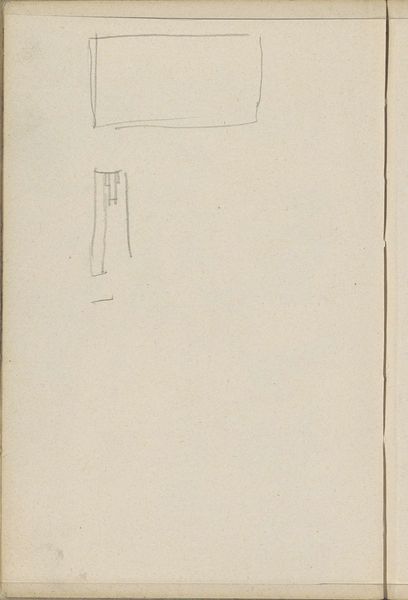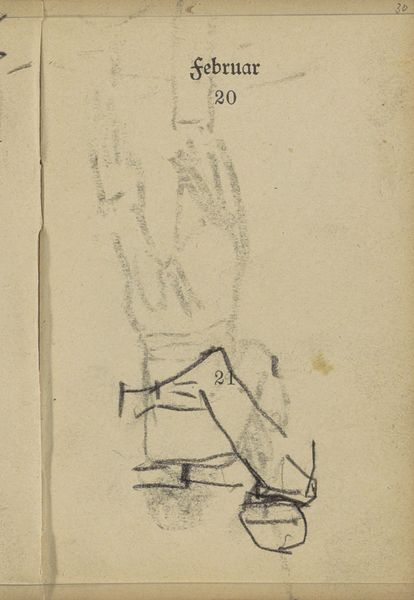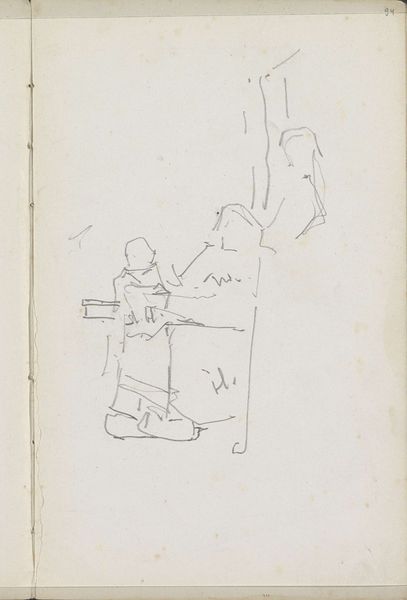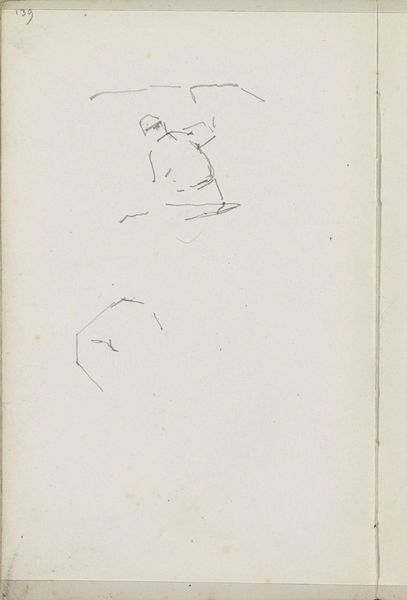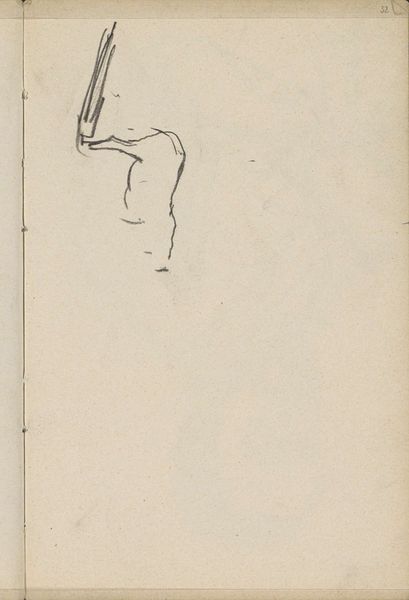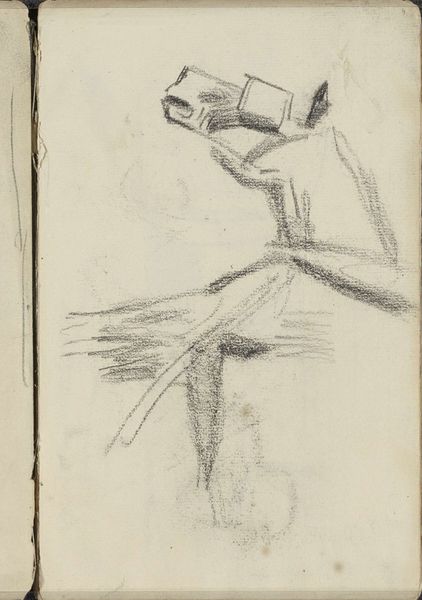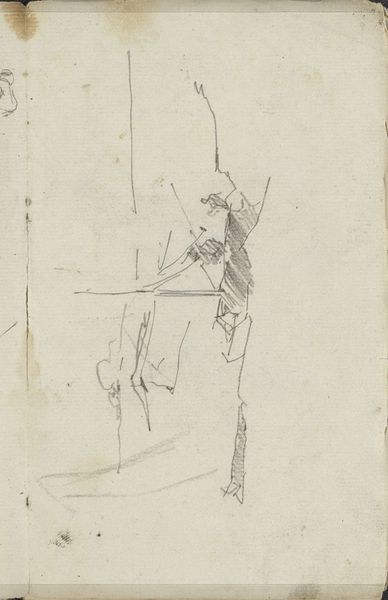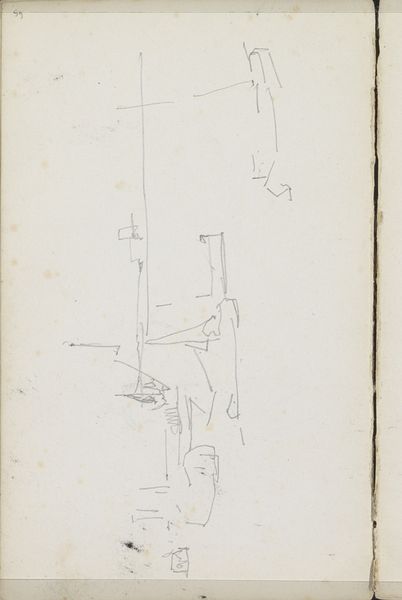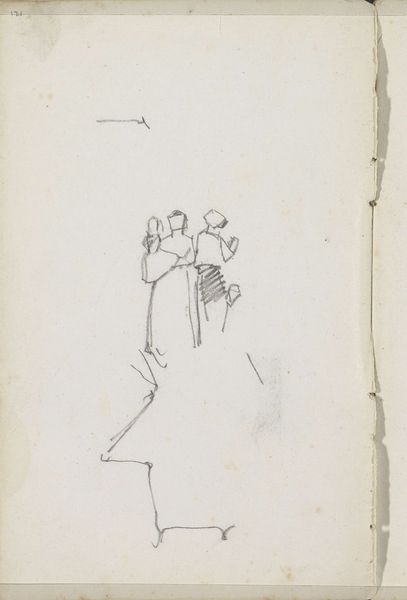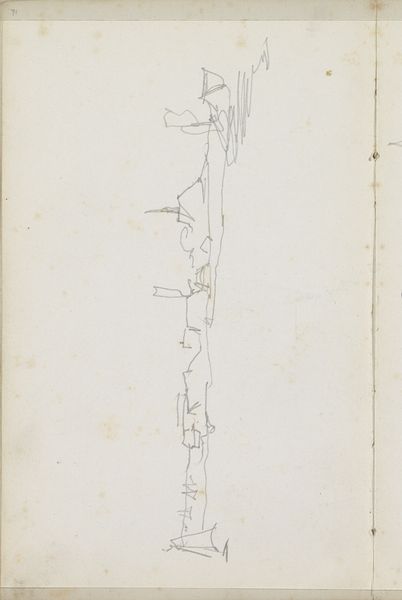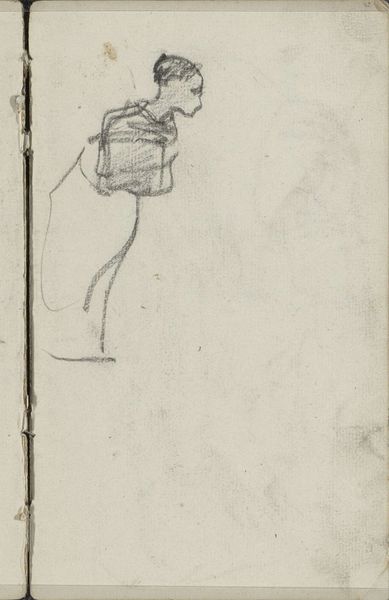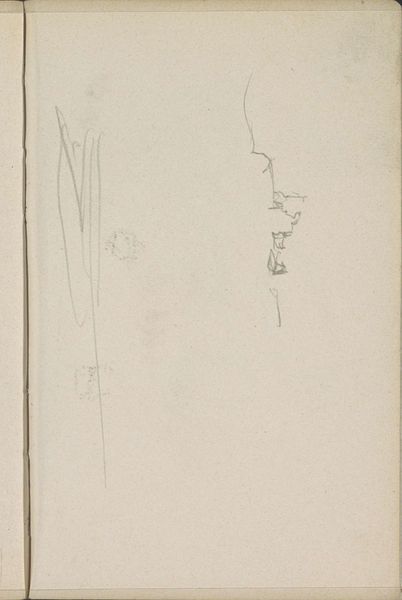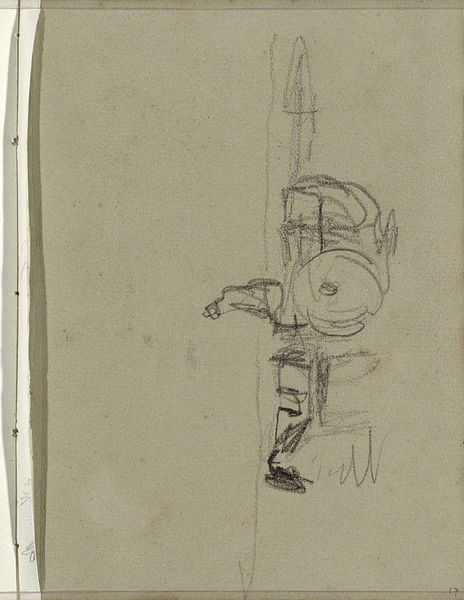
drawing, paper, pencil
#
portrait
#
drawing
#
impressionism
#
figuration
#
paper
#
pencil
#
line
Copyright: Rijks Museum: Open Domain
Curator: Welcome. Here we have "Figuurstudies," figure studies by George Hendrik Breitner, created between 1880 and 1882. This quick sketch, rendered in pencil on paper, captures figures with striking economy. Editor: My first impression? Intimate. The lines are so delicate, almost hesitant, giving the figures a fleeting presence, like ghosts caught mid-motion. I almost feel I shouldn't be looking. Curator: It's intriguing how Breitner, known for his gritty urban scenes, used such a spare technique here. We can look at this drawing in the context of the artist's education at the academy of art where such study sketches are common. The sheet is page from a sketchbook, really, an exercise book. But he doesn't dwell on the realistic details or individualized aspects of each person represented; these sketches are focused on quickly capturing aspects of volume, mass and relationships between a figure and its environment. Editor: Exactly! It raises questions about the purpose of figure studies themselves. Are they merely academic exercises, or is there something deeper happening here? It is less about documenting individual identities and more about examining the underlying structures of how we represent the body, how we codify what a body is. This brings up so many thoughts around the politics of figuration. Whose bodies are worthy of representation and why? Curator: Considering Breitner’s other work depicting the working class in Amsterdam, these figures could also hint at the broader social issues prevalent at the time. The rapid sketches evoke an unpolished quality that can remind the viewer that what you see in the formal paintings is often preceded by numerous drafts, that an art historical notion of realism may not capture a gritty scene, no matter how adept its practitioner may be. Editor: And it is also the composition! The vast expanse of blank space around them amplifies their vulnerability. They seem dwarfed by the emptiness, mirroring, perhaps, the precariousness of life for many in Breitner’s Amsterdam. How interesting to view that social commentary that appears more evidently in his painting when reduced to bare essentials like we have here. Curator: Indeed, there's a quiet power in these seemingly unfinished figures, a testament to Breitner's ability to convey depth with minimal strokes. These economical studies can make us question all we assume about finished works, about the power dynamics involved, and prompt the viewer to fill in these many perceived blanks. Editor: Absolutely. "Figuurstudies" encourages us to look beyond the surface and ponder the stories embedded within the simplest of lines.
Comments
No comments
Be the first to comment and join the conversation on the ultimate creative platform.
